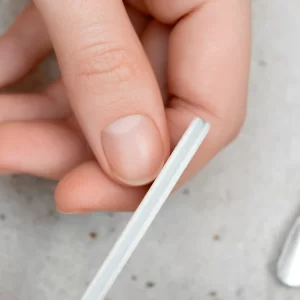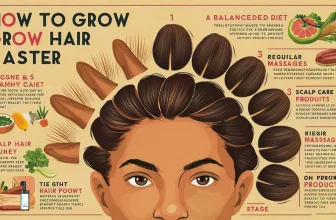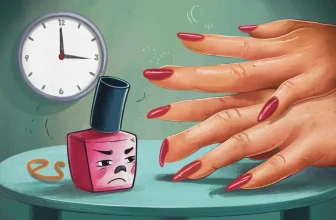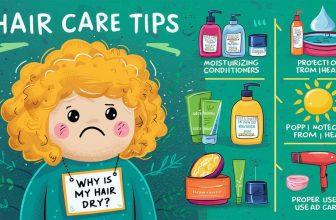Why Is There a White Spot on My Nail

Nails, often overlooked but a vital part of our appearance, can sometimes surprise us with unexpected developments. If you’ve ever noticed a mysterious white spot on your nail are not alone in wondering about its origin and significance. In this exploration, we aim to unravel the mystery behind these enigmatic white spots, shedding light on the various reasons they might appear and whether they hold any cause for concern. Whether you’re here seeking answers or simply curious about maintaining healthy nails, let’s embark on a journey to understand why there might be a white spot on your nail and how you can navigate this common yet intriguing aspect of nail health.
Discovering the Anatomy of Nails
Nails, though often overlooked, play a crucial role in both our daily lives and as indicators of our overall health. Before delving into the intricacies of white spot-on nails, it’s essential to grasp the basics of nail anatomy.
The Nail Matrix: The nail matrix, located beneath the base of the nail, is a crucial component responsible for nail growth. It is a collection of cells that produce keratin, the protein that forms the structure of the nail. As new cells are generated in the matrix, older nail cells are pushed outwards, forming the visible part of the nail known as the nail plate.
The Nail Plate: The nail plate is the hardened, visible part of the nail that extends beyond the fingertip. Composed of tightly packed keratin cells, the nail plate is responsible for protecting the sensitive tissues underneath.
Cuticle and Lunula: Cuticle: The cuticle, a thin layer of skin at the base of the nail, acts as a protective barrier, preventing bacteria and other pathogens from entering the nail matrix.
Lunula: The lunula. Often referred to as the “half-moon” at the base of the nail, is a visible part of the matrix. While the entire matrix is responsible for nail growth, the lunula is the most visible part and is an indicator of overall nail health.
Understanding this basic anatomy provides a foundation for comprehending how and why certain conditions, such as white spots, may arise on the nail.
White spot-on nail plate typically occurs due to disturbances in the nail matrix. Understanding this intricate process helps demystify the origin of these spots. Whether it’s minor trauma, nutritional deficiencies, or other factors affecting the matrix’s normal functioning. The visible outcome is often reflected on the nail plate.
Common Causes of White Spots on Nails
The appearance of white spots on your nails can be attributed to various factors, ranging from minor occurrences to potential indicators of underlying issues. Understanding these common causes can provide clarity on why these spots may appear.
Minor Trauma or Injury: White spots, often referred to as “milk spots” can result from minor trauma or injury to the nail matrix. This can occur due to activities such as tapping your nails on a hard surface or accidentally hitting your fingertips. While these spots may be concerning at first, they are usually harmless and will grow out as your nails continue to grow.
Nutritional Deficiencies: Deficiencies in essential nutrients like zinc and calcium can manifest as white spots on nails. Ensuring a well-balanced diet rich in vitamins and minerals is crucial for overall nail health. If you suspect a nutritional deficiency, consider incorporating more nutrient-dense foods into your diet or consult with a healthcare professional for guidance.
Fungal Infections: Fungal infections, such as onychomycosis, can cause white spots on nails. If the spots are accompanied by changes in nail texture, thickness, or color, it’s advisable to consult a healthcare professional for proper diagnosis and treatment. Fungal infections may require specific antifungal medications to address the underlying issue.
Allergic Reactions: Exposure to certain nail polish, acrylics, or other nail products may trigger allergic reactions, leading to the formation of white spots. If you notice a correlation between using specific products and the appearance of white spots, consider switching to hypoallergenic or gentler alternatives.
Underlying Health Conditions: In some cases, white spots can be indicative of underlying health conditions, such as eczema. If the spots persist, increase in number, or are associated with other concerning symptoms. Addressing the underlying health condition is crucial for resolving nail-related symptoms. It’s important to note that the majority of white spots on nails are harmless and temporary.

Addressing White Spots and Promoting Nail Health
While white spots on nails are often benign, addressing them. Promoting overall nail health involves adopting proactive measures and mindful practices. Here’s a guide to help you navigate the journey towards healthier, spot-free nails:
Gentle Nail Care Practices:
- Avoid Using Nails as Tools: Resist the temptation to use your nails as tools for tasks like opening cans or scratching surfaces. Such activities increase the risk of trauma and contribute to the formation of white spots.
- Regular, Gentle Filing: Maintain your nails with regular. Gentle filing to prevent rough edges and reduce the likelihood of minor injuries that could lead to white spots.
Balanced Diet and Hydration:
- Nutrient-Rich Diet: Ensure your diet is rich in essential nutrients, including zinc, calcium, and vitamins. Incorporate foods like leafy greens, nuts, dairy products, and lean proteins to support overall nail health.
- Hydrate Nails and Cuticles: Regularly apply moisturizer to your nails and cuticles to prevent dryness and promote hydration. Well-hydrated nails are less prone to damage and white spot formation.
Avoiding Allergens:
- Choose Hypoallergenic Products: If you suspect an allergic reaction to specific nail products, opt for hypoallergenic nail polishes and care items. These products are formulated to minimize the risk of triggering allergic responses.
Professional Advice:
- Consult a Dermatologist: If white spots persist, increase in number, or are associated with other concerning symptoms, it’s prudent to consult a dermatologist. Dermatologists specialize in skin and nail health, providing expert insights, accurate diagnoses, and tailored treatment plans.
Preventive Measures:
- Protect Your Nails: Wear gloves when engaging in activities that may expose your nails to harsh chemicals, excessive moisture, or trauma. This helps prevent potential damage that could lead to white spots.
- Regular Check-Ups: Schedule regular check-ups with a dermatologist to monitor the health of your nails and address any emerging concerns promptly.
Conclusion
Remember, the journey to healthier nails involves consistent care and attention. While white spots are often harmless, persistent or worsening symptoms may require professional intervention. Incorporating these practices into your nail care routine. Staying attuned to your nails’ needs, you contribute to their overall well-being. Understanding the various causes of white spots, ranging from minor trauma to underlying health conditions. Empowers you to make informed choices in your nail care routine. Gentle practices, such as avoiding using your nails as tools and regular, careful filing, can significantly reduce the risk of trauma and white spot formation. Maintaining a balanced diet rich in essential nutrients and staying hydrated are not only beneficial for your overall health but also contribute to the health of your nails. Ultimately, white spot-on nails, while often temporary and harmless, serve as reminders to pay attention to our body’s signals.
FAQ’s
Q2: Are white spots on nails a sign of a serious health issue?
In most cases, white spots on nails are harmless and temporary, often resulting from minor trauma or nutritional imbalances. However, persistent or worsening symptoms may indicate an underlying health condition, making it advisable to consult with a healthcare professional or dermatologist for a thorough evaluation.
Q3: Can nutritional deficiencies lead to white spots on nails?
Yes, deficiencies in essential nutrients like zinc and calcium can manifest as white spots on nails. Maintaining a balanced diet rich in vitamins and minerals is essential for overall nail health. If nutritional deficiencies are suspected, consulting with a healthcare professional for personalized guidance is recommended.
Q4: How can I prevent white spots on my nails?
Preventive measures include practicing gentle nail care, avoiding using nails as tools, maintaining a balanced diet, staying hydrated, and choosing hypoallergenic nail products. Protecting your nails during certain activities and regular check-ups with a dermatologist contribute to the prevention of white spots.
Q5: Can I cover white spots with nail polish?
While nail polish can temporarily conceal white spots, it's essential to address the underlying cause. Continual use of nail polish without addressing the root issue may lead to further complications. If in doubt, it's advisable to consult with a dermatologist before applying any cosmetic solutions.






